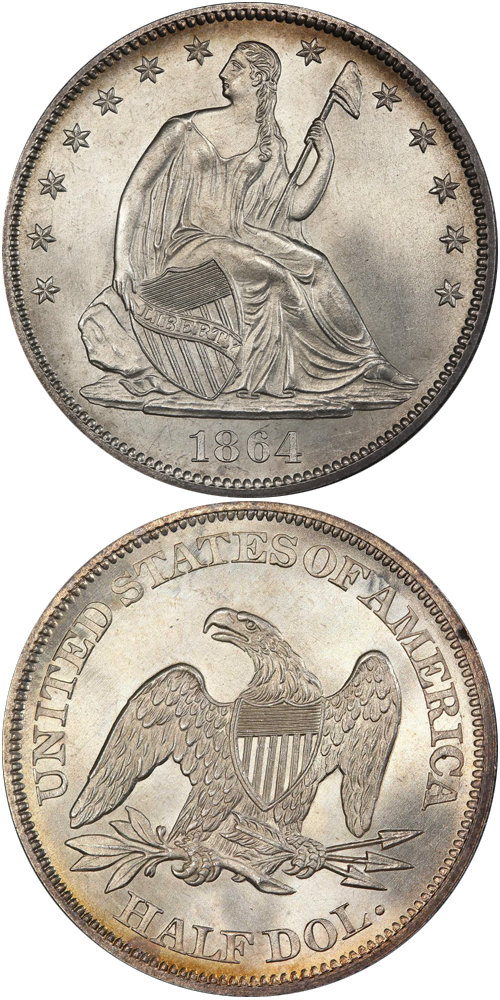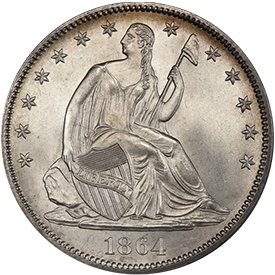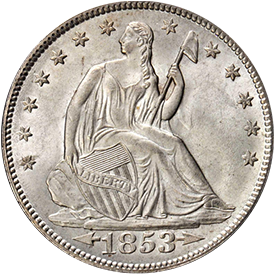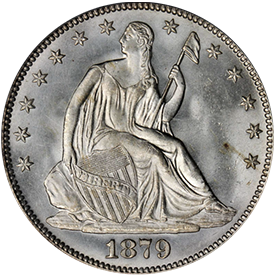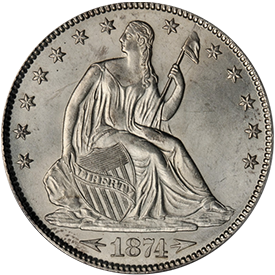After making its appearance in 1837 on the half dime and dime, and in 1838 on the quarter, Christian Gobrecht’s Seated Liberty design finally came to the half dollar in 1839. The initial strikings showed no drapery from Liberty’s left arm but drapery was added later that year. Additionally, in 1842 the lettering on the reverse was enlarged, but neither of these two changes are considered to be distinct types. They are however, certainly of importance to variety collectors.
An increase in the world price of silver vis-à-vis gold following the discovery of gold in California in 1849 led to the melt value of U.S. silver coins exceeding their face value, and in 1853 the weight of nearly all U.S. silver coins was reduced by roughly 7%. To signify this change, arrows were placed beside the date on the obverse, and rays added around the eagle on the reverse. The rays were removed in 1854, but the arrows remained through 1855. A few coins dated 1853 were struck in New Orleans without arrows, but these coins are a major rarity with only four pieces presently known.
Another unusual coin during this period was the 1861 half struck in New Orleans. Of the roughly 2.5 million pieces minted, only around 12% were struck under the U.S. government. It is estimated that about half were struck under the State of Louisiana and the remaining 38% minted under the auspices of the Confederacy! A diagnostic die crack from Liberty’s nose to the border can be used to identify these later “Confederate” strikes.
Following the Civil War, in 1866 the motto “In God We Trust” was added to the reverse on a ribbon above the eagle. These “With Motto” coins were made through the end of production in 1891. A very minor increase in weight (from 12.44 grams to 12.50 grams was made in 1873, and again arrows at the date appeared in 1873 and 1874 to mark this change. Coins dated 1873 appear both with, and without the arrows.
